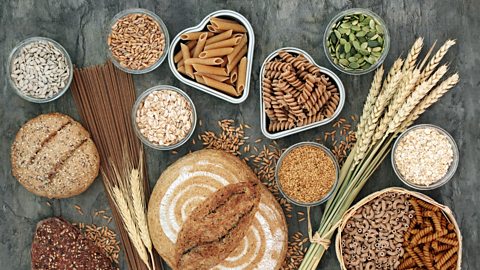How to eat more of the lifesaving nutrient 90% of us lack

More than of adults in the UK don’t eat enough fibre, according to the National Diet and Nutrition Survey (NDNS). Yet can reduce your risk of heart disease, stroke, Type 2 diabetes and bowel cancer and improve your blood pressure and cholesterol levels. Fibre is found in many everyday foods, so why do just four percent of women and 13 percent of men aged 19-64 consume the daily adult recommended amount of , and how can you make sure you’re getting enough?
Does it matter what type of fibre you eat?
Adults . How can you improve on that?
Fibre, a carbohydrate that , is found in many plants. “Because the components of dietary fibre are found in different proportions in fibre-containing foods and have different properties, it is important to eat a variety of fibre-containing foods”, according to the British Nutrition Foundation (BNF).
While there are many types of fibre, they are often categorised as ‘soluble’ (can be dissolved in water) and ‘insoluble’. The majority of plant foods contain both types, but are richer in one than the other. Most of us get a mix of soluble and insoluble fibres easily.
Fibre is well known for stopping constipation, but the BNF has a tip about this: “For fibre to have the best effect on preventing constipation, an increase in fibre intake should be accompanied by an increase in fluid intake”.
Easy ways to eat more fibre
An easy way to boost your fibre intake is to get your five fruit and vegetables a day, especially if you eat any edible peel.
Start the day with a high-fibre breakfast. Replace white carbohydrate foods with brown, including wholegrain bread, pasta and rice, in dishes such as this bacon and kale pasta. Bulk out meaty meals such as spaghetti bolognese, curries and stews with extra veg, beans and lentils, or make them the star as in homemade beans on wholegrain toast.
Eat potatoes with the skin on, like these baked potatoes, and snack on vegetable sticks, oatcakes, unsalted nuts and seeds. Here are some more tips for eating more .
But be careful – if you don’t eat much fibre, it is best to increase the amount you eat slowly to avoid digestive issues.
How much fibre do foods contain?
Here is the approximate fibre content of some common foods:
- 100g dried brown pasta - 12g
- 200g tinned baked beans - 10g
- 1 baked potato (with skin) - 6g
- 40g oats - 4g
- 2 slices wholegrain bread / toast - 4g
- 80g cooked chickpeas - 4g
- 80g cooked lentils - 3g
- 100g dried brown rice - 2g
- Handful almonds - 2g
- 1 medium apple - 1g
- 1 medium banana - 1g
The British Nutrition Foundation (BNF) has a more comprehensive list of .

What are the benefits?
suggests that for every 1,000 people who switch from a low- (less than 15g) to high-fibre diet (25-29g), 13 deaths and six cases of heart disease would be prevented.
Protecting against bowel cancer
“Dietary fibre may help to protect against bowel cancer”, though the reasons for this are unclear, . It suggests quicker bowel movements and / or healthy gut bacteria could be the cause. You ideally need a balance of soluble and insoluble fibres.
How fibre may increase healthy gut bacteria
Research has shown that diverse gut bacteria is likely to be good for our health. you can increase the diversity of bacteria in your gut by eating more fibre. The large intestines are home to billions of bacteria, and they eat fibre, ferment it and producing substances thought to be such as short-chain fatty acids as they do so. Research has linked gut bacteria to the status of our and . You can read more about eating for a healthy gut on 91»»±¨ Food.
Why fibre may lower the risk of heart disease
Increasing the amount of soluble fibre (found in higher quantities in fruits such as apples and berries, beans, nuts and oats) in your diet , reducing your risk of heart disease. Our bodies naturally produce some cholesterol, and we need it to stay healthy, but too much “bad” cholesterol (non-high-density lipoproteins) can “increase your risk of heart and circulatory diseases such as heart attack and stroke”, says the . “Soluble fibre binds with some of the fat from the diet and stops us from absorbing all of it”, says Medlin.
How fibre keeps us feeling full
“Switching from low-fibre to higher-fibre foods can keep you feeling fuller for longer”, according to Medlin. Fibre lowers the Glycaemic Index (GI) of food, which is how quickly you absorb the sugars. “Fibre slows the digestion of food”, says Medlin, adding that “it stays in our stomach for longer and makes the body work harder to access the glucose”. If you remove fibre from foods, you will absorb the glucose from them quickly, leading to feelings of hunger quicker than if you ate the foods with their fibre. Examples of foods with the fibre removed are white bread, pasta and rice and fruit juice. If you feel full for a longer period of time “you are less likely to snack or eat again soon”, she continues.